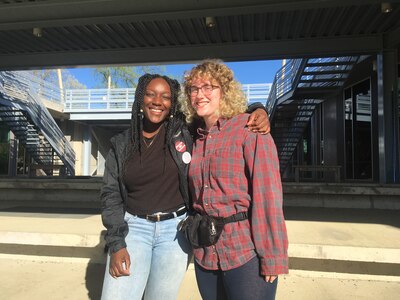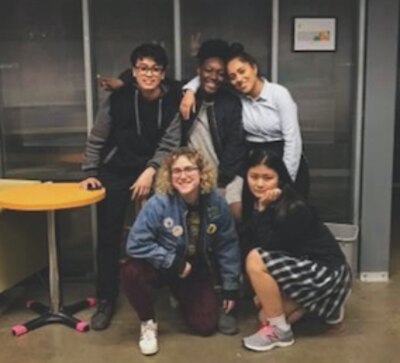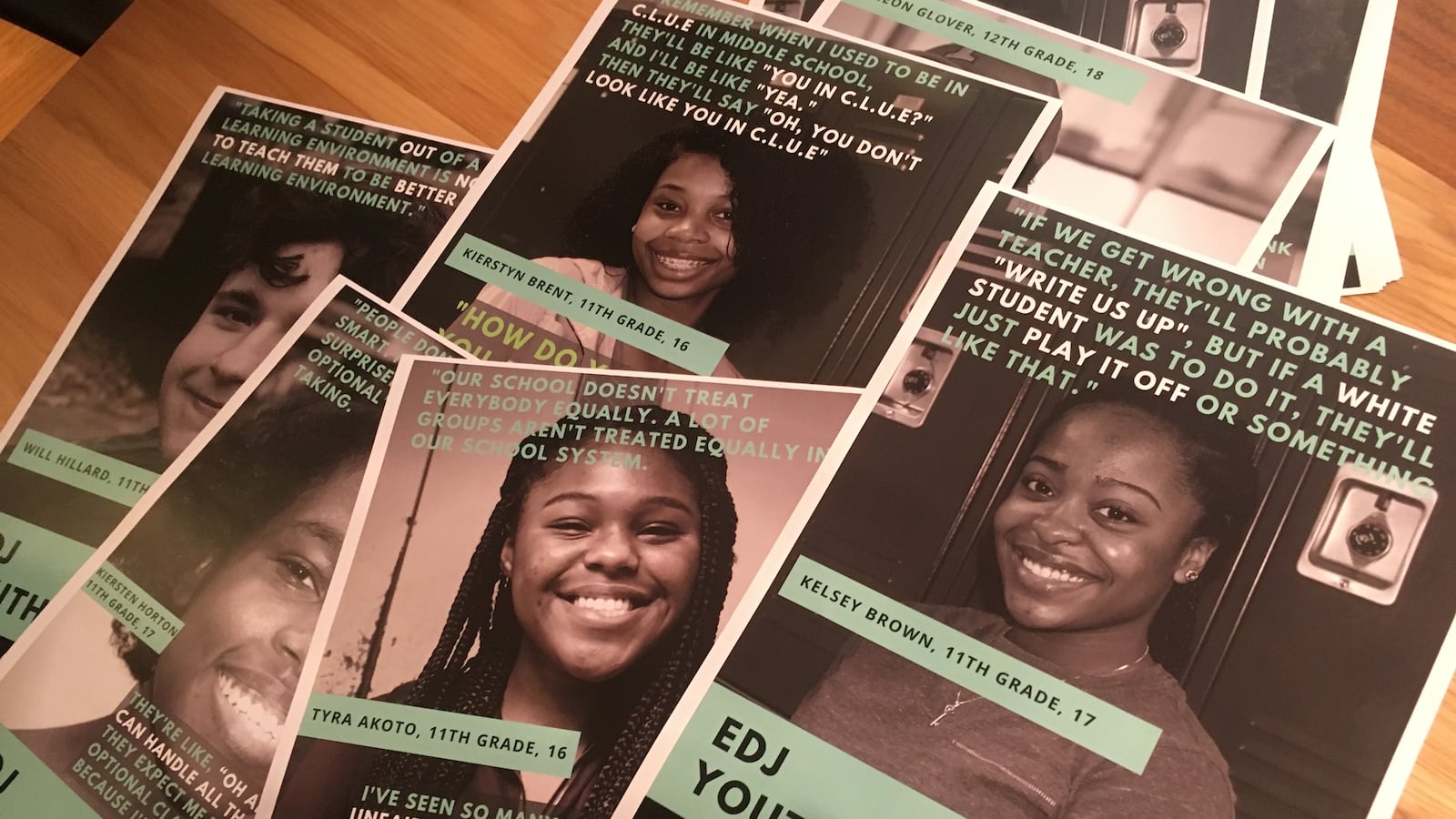Now in her third year of attending a premier public high school in Memphis, Janiya Douglas says she’s observed discipline being handed out unevenly to her classmates, depending on whether they are on the college preparatory track.

“We’re heavily divided in an academic hierarchy,” said Janiya, a junior in the optional program for high-achieving students at White Station High School. “It’s obvious students are treated differently if they are in traditional classes.”
Janiya also has observed racial disparities in how students are disciplined, and the state’s data backs that up. White Station students who are black or Hispanic are suspended at significantly higher rates than students who are white.
Frustrated by what she’s seen, Janiya took her concerns last Friday to the hallways of White Station and hung 14 posters to declare that “our school doesn’t treat everybody equally.”
By Monday morning, the posters were gone — removed by school administrators because Janiya did not get prior approval — but not before other students shared images of some of the messages on social media.
Now, Janiya is seeing some fruits of her activism, spawned by her participation in Bridge Builders CHANGE, a student leadership program offered by a local nonprofit organization.
In the last week, she’s met with Principal David Mansfield, a school counselor and a district discipline specialist to discuss her concerns. She’s encouraged that someone is listening, and hopes wider conversations will follow.
The discussions also are bringing attention to an online petition by the education justice arm of Bridge Builders calling for suspension alternatives across schools in Memphis.
White Station often is cited as one of the jewels of Shelby County Schools, a district wrought with academic challenges. The East Memphis school is partially optional, meaning some students test into the college prep program from across the county.
But Janiya and some of her classmates say they also see an academically and racially segregated school where students zoned to the traditional program are looked down upon by teachers. Those students often get harsher punishments, they say, than their optional program counterparts for the same actions.
“Our school doesn’t treat everybody equally. A lot of groups aren’t treated equally in our school system,” junior Tyra Akoto said in a quote featured on one poster.
“If we get wrong with a teacher, they’ll probably write us up. But if a white student was to do it, they’ll just play it off or something like that,” said Kelsey Brown, another junior, also quoted in the poster campaign.
A district spokeswoman did not respond to questions about disciplinary issues raised by the posters, but offered a statement about their removal from the school’s walls.
White Station is known for “enabling student voice and allowing students to express their opinions in various ways,” the statement reads. “However, there are protocols in place that must be followed before placing signs, posters, or other messages on school property. Schools administrators will always work with students to ensure they feel their voices are heard.”

To create the posters, Janiya interviewed about two dozen students and had been learning about about school discipline disparities as part of the Bridge Builders CHANGE program.
State discipline data does not differentiate academic subgroups in optional schools. But white students in Shelby County Schools are more likely to be in an optional school program and less likely to be suspended. And statewide in 2014-15, black students were more than five times as likely as white students to be suspended.
White Station reflects those same disparities. About 28 percent of black boys and 19 percent of black girls were suspended that same year — significantly higher than the school’s overall suspension rate of 14 percent. About 17 percent of Hispanic boys and 7 percent of Hispanic girls were suspended. By comparison, 9 percent of white boys and 2 percent of white girls were suspended.
Shelby County Schools has been working to overhaul its disciplinary practices to move from punitive practices to a “restorative justice” approach — a transition that is not as widespread as officials would like, according to Gina True, one of four specialists implementing a behavior system called Positive Behavior Interventions and Supports, or PBIS.
“The whole goal is to not get them suspended, because we want to educate them,” said True, who met this week with Janiya and several other students from Bridge Builders. “When students are cared for emotionally, they perform better academically. As counselors, that’s what we’ve been saying for years.”
Janiya acknowledges that she didn’t follow her school’s policy last week when hanging posters without permission at White Station. But she thinks her action has been a catalyst for hard conversations that need to happen. And she hopes the discussions will include more student input from her school — and across the district.
“Those most affected by the issues should always be a part of the solution,” she said.
Correction: April 10, 2017: A previous version of this story said Janiya put up 50 posters at her school. She designed 50 but actually posted only 14.

